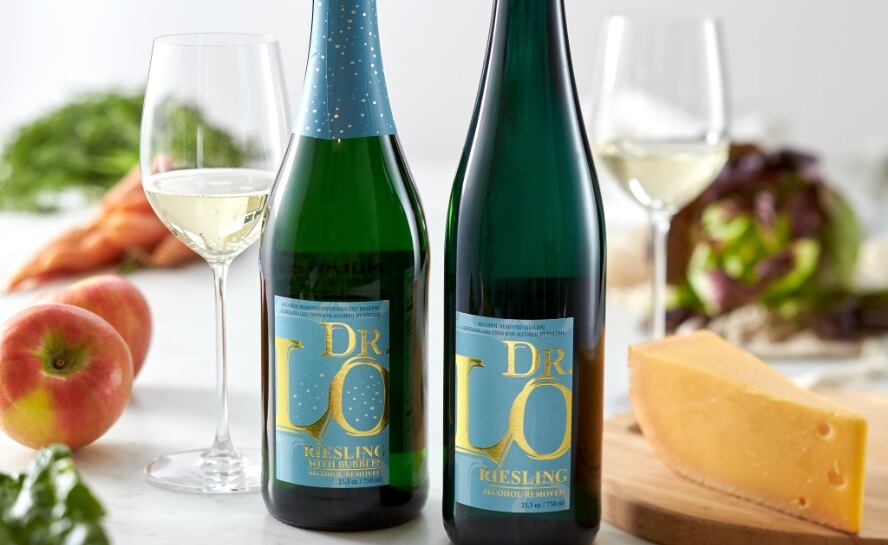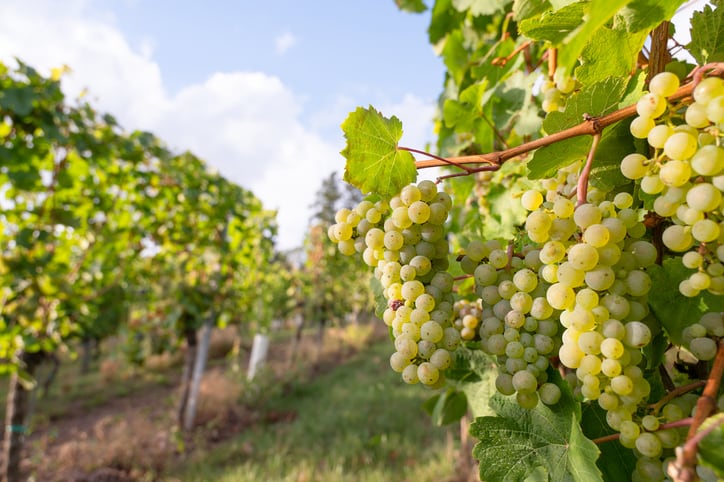As the sober-curious movement continues to grow, winemakers across the globe have been putting more effort into developing no and low alcohol wine options to accommodate changing consumer preferences.
And German wine producers have dedicated themselves to this endeavor: more than 100 German winemakers now produce non-alcoholic wines and they’re finding success in Germany, the US and beyond.
From alcohol-free beer to alcohol-free wine
Alcohol-free beer is booming in Europe and German brewers have led the way through decades of innovation: today, nearly one in 10 beers brewed in Germany is alcohol-free.
The market share of alcohol-free wine remains small at around 1.5%, but it’s growing: alcohol-free wine sales in Germany grew 68% in 2024.
But it’s not just about domestic sales. Germany is a key wine exporter (the seventh largest in the world), and its wines are found across the globe. And the same moderation trends are found worldwide: global alcohol-free volumes are set to grow 7%.
And Germany wants to be at the front of alcohol-free wine growth both at home and abroad. The de-alcoholization process for wine was patented in Germany in 1907: and winemakers have spent the last century developing and improving processes for alcohol-free wine.
Today, German alcohol-free wines making waves in the US include Dr. Loosen, Weingut Bibo Runge and Selbach-Oster.
Meanwhile, widely available low-ABV options include Clean Slate Riesling, 2022 Dr. Loosen Blue Slate Riesling Kabinett and 2022 Robert Weil Rheingau Riesling Trocken.

“The German beer brewing industry has also long been innovating in alcohol-free offerings, with a strong focus on perfecting quality,” notes Cassidy Havens, DipWSET and managing director for Wines of Germany USA.
“Germany is recognized by Americans for high-quality beer: and many drinkers have explored German non-alcoholic options within the category for this reason.
“This strong reputation gives credibility for the country’s non-alcoholic wines and is leading to discovery.”
Ready to shine: Riesling
Germany is already renowned for its standard, alcoholic Riesling wines. But this grape variety also holds the key to unlocking the potential of alcohol-free wine.
A key challenge for alcohol-free wines is that the delicate flavors of grapes react far less favorably to dealcoholization: often losing much of their character. Riesling, however, is more robust in this respect.
“Riesling is an excellent variety for creating non-alcoholic wines, because it is aromatic and easily retains its floral and fruity profile,” said Havens. “It is also a high acid variety, which helps to balance any sweetness in the wine, which usually provides body as a counterbalance for the lack of alcohol.”

But Germany’s cooler climate also helps Riesling shine when it comes to alcohol-free and lower alcohol: Riesling has a naturally lower ABV thanks to the climate (warmer climes lead to higher alcohol content).
“When a wine has a naturally lower alcohol content, it’s easier to create a non-alcoholic wine that feels more “complete” and less like it is lacking a component of its structure.”
Riesling: The perfect grape for alcohol-free
Grapes undergo biological ripeness (which results in the accumulation of sugars and seed maturation) followed by physiological ripeness (which results in maturation of the skins, seeds, and pulp, which leads to color, flavor and aroma development).
“To achieve both, you need warmth and sunlight, but a very warm or sunny environment (such as California, for instance) leads to the rapid accumulation of sugars, which is converted to a higher alcohol content during fermentation," explains Havens.
“Because Germany is northerly with a cool climate and unique topographies, the grapes achieve the perfect balance of biological and physiological ripeness and retain a lower alcohol level following natural fermentation.
“For instance, in the Mosel Valley, it is not uncommon to find fully dry Rieslings at 11% or 11.5% alcohol, due to the cool climate and steep slate slopes.”
Overcoming the challenges
Alcohol-free wine has been slower to take off than alcohol-free beer for many reasons: it’s a larger challenge technically; while alcohol-free wine does not yet have the same consumer acceptance as alcohol-free beer.
New world wine markets such as Australia and New Zealand are leaning on their innovative approaches to change that.
Germany’s approach, meanwhile, is to lean into its success story from alcohol-beer, its wine expertise and Riesling advantage.
But a shift towards alcohol-free is also being driven by wine industry challenges: like other wine producing nations, German’s wine industry faces the challenge of declining consumption, and winemakers know they need to explore emerging facets of the industry to encourage future growth. Alcohol-free is one of these.
Germany's wine industry
While Germany may be a country best-known for beer, the wine industry is a key player in the country and boasts a strong international reputation.
It’s the third-largest consumer of wine in the EU; and the seventh-largest global exporter of wine.
“While still niche, non-alcoholic wine was one of the only categories to grow in 2024, and its expansion is primarily being driven by Gen Z and Millennials,” says Haven. “The alcohol-free wine industry can continue to engage this demographic by experimenting with smaller, on-the-go packaging and showing up where these consumers are: digitally.”
But ultimately it’s about embracing the quality in alcoholic wine that Germany is already known for – and extending that to alcohol-free wine.
“For the wine industry to thrive and be successful, we need to get consumers excited about this agricultural product, not about the alcohol,” said Haven.
“German wine producers treat their non-alcoholic wines with as much care and precision as they do their standard wines, not just as a trendy category extension.
“If anyone is looking to try the best of the non-alcoholic wine category, Germany is the place to start.”

